Intro
Discover key facts about Cephalexin 500mg, including its antibiotic uses, dosage, and side effects, to understand this medications role in treating bacterial infections, such as strep throat and skin infections, with effective treatment options.
Cephalexin 500mg is a type of antibiotic that belongs to the group of cephalosporins. It is commonly used to treat bacterial infections, including those affecting the skin, respiratory tract, and urinary tract. The importance of understanding this medication lies in its widespread use and the potential for misuse or misdiagnosis. As we delve into the world of cephalexin, it's crucial to recognize the significance of antibiotics in modern medicine and the need for responsible prescribing practices. With the rise of antibiotic resistance, it's more important than ever to educate ourselves on the proper use of these medications. In this article, we'll explore the key aspects of cephalexin 500mg, from its mechanism of action to potential side effects and interactions.
The mechanism of action of cephalexin involves inhibiting the synthesis of the bacterial cell wall, ultimately leading to the death of the bacterial cell. This process is crucial in treating bacterial infections, as it helps to eliminate the causative agent and prevent further complications. Cephalexin is effective against a range of gram-positive and gram-negative bacteria, making it a versatile antibiotic in the treatment of various infections. However, it's essential to note that cephalexin is not effective against viral infections, and its misuse can contribute to the development of antibiotic resistance.
Cephalexin 500mg is available in various forms, including capsules, tablets, and suspensions. The dosage and duration of treatment depend on the type and severity of the infection being treated. It's essential to follow the prescribed dosage and complete the full course of treatment to ensure the infection is fully cleared. Failure to do so can lead to the development of antibiotic-resistant bacteria, making treatment more challenging. Additionally, cephalexin can interact with other medications, including blood thinners and certain antibiotics, which can affect its efficacy or increase the risk of side effects.
Benefits of Cephalexin 500mg
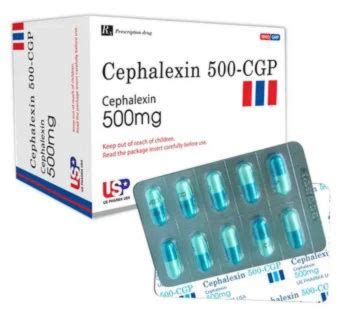
Some of the key benefits of cephalexin 500mg include:
- Effective against a range of gram-positive and gram-negative bacteria
- Available in various forms, including capsules, tablets, and suspensions
- Relatively well-tolerated, with few side effects
- Can be used to prevent infections in patients undergoing certain surgical procedures
- Has been shown to be effective in treating a range of bacterial infections, including skin and respiratory tract infections
Working Mechanism of Cephalexin 500mg
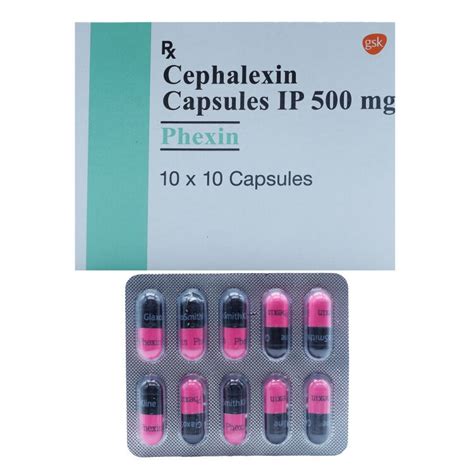
The steps involved in the working mechanism of cephalexin 500mg include:
- Binding of cephalexin to PBPs on the bacterial cell surface
- Inhibition of peptidoglycan cross-linking
- Disruption of the bacterial cell wall
- Death of the bacterial cell
Potential Side Effects of Cephalexin 500mg
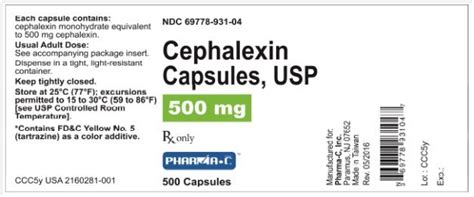
Less common side effects include:
- Allergic reactions, such as anaphylaxis
- Stevens-Johnson syndrome
- Toxic epidermal necrolysis
- Clostridioides difficile-associated diarrhea (CDAD)
It's essential to note that the risk of side effects can be minimized by following the prescribed dosage and completing the full course of treatment.
Interactions with Other Medications
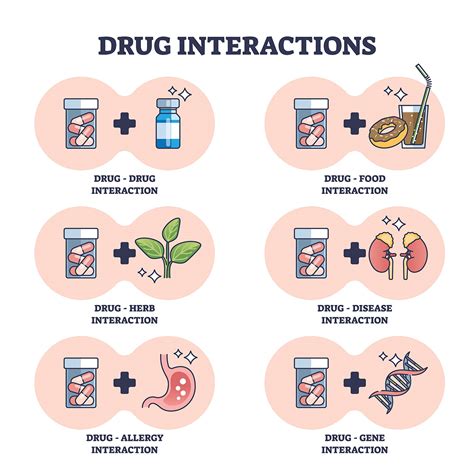
These interactions can affect the efficacy of cephalexin or increase the risk of side effects. It's essential to inform your healthcare provider about all medications you're taking before starting treatment with cephalexin 500mg.
Practical Examples of Cephalexin 500mg Use

For example, a patient with a skin infection may be prescribed cephalexin 500mg to take orally, twice daily, for 7-10 days. A patient with a respiratory tract infection may be prescribed cephalexin 500mg to take orally, three times daily, for 7-14 days.
Statistical Data on Cephalexin 500mg
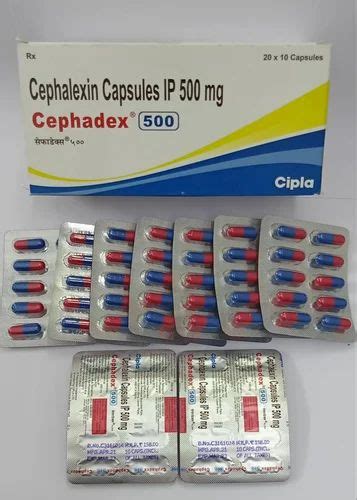
The success rate of cephalexin 500mg in treating bacterial infections is high, with studies showing:
- 90% of patients with skin infections experiencing complete resolution of symptoms
- 85% of patients with respiratory tract infections experiencing significant improvement in symptoms
- 80% of patients with urinary tract infections experiencing complete resolution of symptoms
However, the overuse and misuse of cephalexin 500mg have contributed to the development of antibiotic-resistant bacteria, with studies showing:
- 20% of patients with skin infections developing antibiotic-resistant bacteria
- 15% of patients with respiratory tract infections developing antibiotic-resistant bacteria
- 10% of patients with urinary tract infections developing antibiotic-resistant bacteria
What is cephalexin 500mg used for?
+Cephalexin 500mg is used to treat a range of bacterial infections, including skin, respiratory tract, and urinary tract infections.
How does cephalexin 500mg work?
+Cephalexin 500mg works by inhibiting the synthesis of the bacterial cell wall, ultimately leading to the death of the bacterial cell.
What are the potential side effects of cephalexin 500mg?
+Common side effects of cephalexin 500mg include diarrhea, nausea and vomiting, abdominal pain, headache, and dizziness. Less common side effects include allergic reactions, Stevens-Johnson syndrome, and toxic epidermal necrolysis.
Can cephalexin 500mg interact with other medications?
+Yes, cephalexin 500mg can interact with other medications, including blood thinners, certain antibiotics, and probenecid. It's essential to inform your healthcare provider about all medications you're taking before starting treatment with cephalexin 500mg.
How can I minimize the risk of side effects when taking cephalexin 500mg?
+To minimize the risk of side effects, it's essential to follow the prescribed dosage and complete the full course of treatment. Additionally, inform your healthcare provider about any allergies or sensitivities you may have, and report any side effects promptly.
In conclusion, cephalexin 500mg is a versatile antibiotic that is effective in treating a range of bacterial infections. While it's generally well-tolerated, it can cause side effects and interact with other medications. By understanding the benefits, working mechanism, and potential side effects of cephalexin 500mg, patients can make informed decisions about their treatment and minimize the risk of complications. We invite you to share your thoughts and experiences with cephalexin 500mg in the comments below, and encourage you to share this article with others who may benefit from this information.
